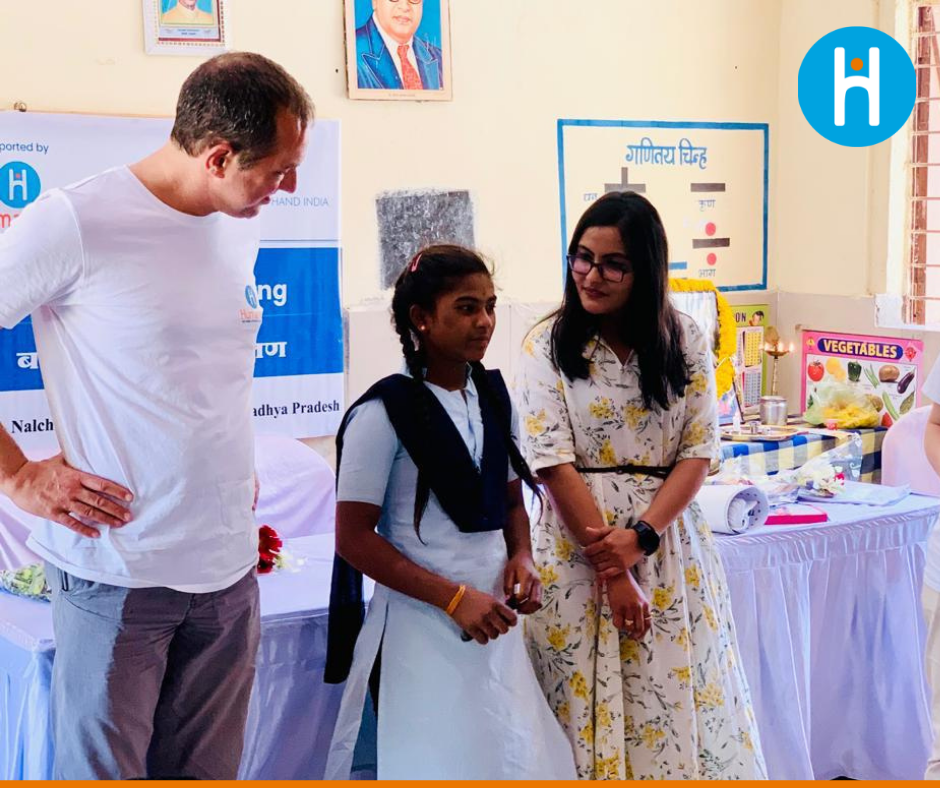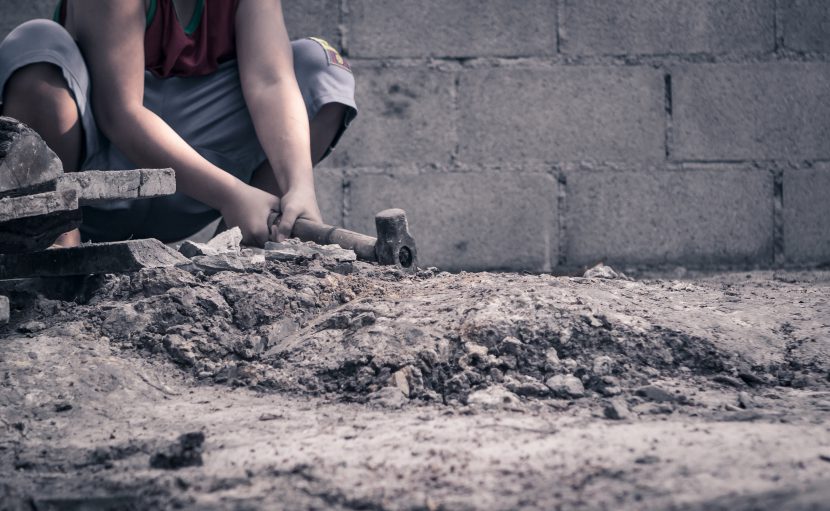Humanium is committed to fighting against child labor and child trafficking and is actively involved in several multi-level projects aimed at eliminating these practices and ensuring full respect for children’s rights. Humanium is indeed engaged in deep cooperation with civil society to build strong partnerships to implement children’s rights and we strive to propose recommendations and proposals at the United Nations level.
Child labor – a clear violation of children’s rights
The International Labour Organization (ILO) defines child labor as a flagrant violation of child rights as stipulated under Article 32 of the Convention on the Rights of the Child, specifying that it is “work that is mentally, physically, socially or morally dangerous and harmful to children; and interferes with their schooling by: depriving them of the opportunity to attend school; obliging them to leave school prematurely; or requiring them to attempt to combine school attendance with excessively long and heavy work” (ILO, 2017). It further defines child labor as “work that deprives children of their childhood, their potential and their dignity” (ILO, 2017).
According to a newly released report by the International Labor Organization (ILO) and UN children’s agency UNICEF, more than 160 million children are in child labor worldwide (Unicef, 2022). Humanium supports the global call for urgent measures to address this sad fact and remains deeply concerned that millions more children will be soon pushed into work, which can seriously jeopardize their physical and mental health (Unicef, 2022).
Indeed, child labor also produces a structural impact on the enjoyment of other human rights, including rights to adequate housing, education, right to the highest attainable standard of health, right to a healthy environment and often has its root causes in structural, racial and other forms of discrimination (ILO, 2017).
Root causes of the rise in child labor figures
The COVID-19 pandemic, armed conflicts, along with food, humanitarian and climate change threaten to reverse years of progress against child labor and to inverse this trend there is the need for urgent actions and interventions by representatives of governments, workers’ and employers’ organizations, UN agencies, civil society and regional organizations (OHCHR, 2022).
In fact, the global impact of the pandemic and ongoing armed conflicts on children and their families is being felt in many areas of life and this is confirmed in a new Child Labor Report 2022 by Terre des Hommes International Federation (Terre des Hommes International Federation, 2022). For millions of children, the instability caused by the current crisis means hunger, poverty and the end of educational opportunities.
Case studies conducted by Terre des Hommes in India and Peru show that many children have started to work as a result of the pandemic to ensure the survival of their families, and, for the first time in 20 years, child labor is on the rise globally (Terre des Hommes International Federation, 2022).

Governments must act rapidly, effectively, and continuously to eliminate child labor. Moreover, business enterprises must have due diligence processes in place to ensure that there is no child labor across the supply chains and, where it is found, to hold all their subsidiaries, contractors, and sub-contractors accountable in line with the UN Guiding Principles on Business and Human Rights. Apart from that, governments must ensure that all actors involved in the use of child labor are held accountable (OHCHR, 2022).
More generally, the international community must adopt measures that enable the poorest to regain access to economic and social supply. This includes, above all, protection against violence and access to education that enables children not be exploited as day laborers.
Humanium’s efforts in combating child labor and trafficking
Humanium is proudly committed to contributing to the work towards a world where child labor and human trafficking are effectively fought and where children are no more exploited.
Humanium’s advocacy work to combat child labor has been going on for years and is multi-layered. In fact, Humanium has participated in several working groups where strategies to combat child labor are being developed, proposing solutions and alternatives to the current practice. As part of these working groups, on May 19, 2022, Humanium attended the Global Conference on the Elimination of Child Labor where 4 delegates of the children’s advisory committees took the stand and said: “Listen to us. Understand us. Implement laws that respect our rights” (Children’s Advisory Committees, V. Global Conference on the Elimination of Child Labour).
During this event, the concept of “building back better” after COVID-19 and empowering all stakeholders to reverse the rise of child labor numbers was reiterated. This means that it is necessary to acknowledge the endemic difficulties and crises that pre-existed the pandemic, to consider their current evolution, and to strive to rebuild in a more conscious way a world in which children’s rights are assured.
Humanium also warmly welcomed the call for inputs issued by the Special Rapporteur on trafficking of persons, especially women and children. His Report was presented at the 50th session of the Human Rights Council in June 2022 in order to combat the exploitation of children in the agricultural sector. Indeed, about 59 % of all children aged 5–17 who are victims of trafficking, work in the agricultural sector, and are particularly prone to unsafe conditions and hazards threatening their health and their physical and mental development (ILO, 2017).
In January 2022, Humanium submitted proposals to reinforce the delivery of basic services such as education, social protection, employment, labor safeguards, access to health and access to justice. Humanium also took it a step further by including the correlation between the increased numbers in child labor and climate change.
Indeed, human trafficking is an unintended but direct consequence of climate change (Center for Biological Diversity, 2018). It has been reported that the impacts of both slow-onset environmental degradation and sudden-onset disasters contribute to mobility, and, in 2020 alone, there were an estimated 9.8 million climate-related displaced children totally exposed to the risk of exploitation and child labor (Unicef, 2021).
Humanium as an organization is also actively working on field projects aimed at eliminating child labor. In partnership with Hand in Hand India, Humanium is set to end child labor through education, by offering the former child laborers in the Residential Special Training Center in Madhya Pradesh, India, tailored educational, physical, mental and emotional support, and ultimately reintegrating them into public schools.
Finally, Humanium is proud to continue its work in the future towards achieving a world where child labor is effectively eradicated and where children’s and families’ vulnerabilities are protected and never again exploited.

If you too would like to contribute to the fulfillment of children’s rights around the world, consider making a donation, becoming a Humanium member or joining the Humanium community by becoming a volunteer.
Written by Federica Versea
Bibliography:
ILO. (2017). Global Estimates of Child Labour: Results and trends, 2012-2016. Taken from International Labor Organization: https://www.ilo.org/wcmsp5/groups/public/—dgreports/—dcomm/documents/publication/wcms_575499.pdf, accessed on August 1, 2022.
OHCHR. (2022). UN experts urge action to address alarming increase of child labour in agriculture sector. Taken from United Nations Human Rights Office of the High Commissioner: https://www.ohchr.org/en/press-releases/2022/05/un-experts-urge-action-address-alarming-increase-child-labour-agriculture, accessed on July 27, 2022.
Terre des Hommes International Federation. (2022). Terre des Hommes International Federation. Taken from NEW CHILD LABOUR REPORT AHEAD OF THE ILO WORLD CONFERENCE ON THE ELIMINATION OF CHILD LABOUR: https://www.terredeshommes.org/new-child-labour-report-2022-ahead-of-the-ilo-world-conference-on-the-elimination-of-labour/, accessed on August 1, 2022.
Unicef. (2022). Child labour rises to 160 million – first increase in two decades. Taken from Unicef: https://www.unicef.org/press-releases/child-labour-rises-160-million-first-increase-two-decades, accessed on July 26, 2022.


